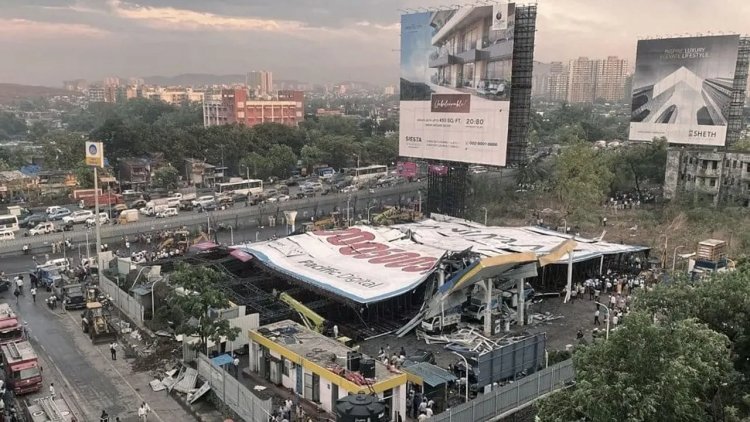Mumbai Billboard Collapse Spurs Tough Outdoor Ad Rules Overhaul
Mumbai’s billboard collapse sparks strict outdoor ad policy reforms. New guidelines mandate size caps, insurance, blacklisting, and tighter rules for digital hoardings.

A devastating billboard collapse in Mumbai’s Ghatkopar suburb on May 13, 2024, has led to sweeping reforms in the city’s outdoor advertising policies. The incident occurred during heavy rainfall when a massive 120x120 ft billboard crashed onto a petrol station, leaving 75 people injured and 17 dead.
The tragedy highlighted severe lapses in compliance. Investigations revealed the billboard was illegally constructed, exceeding the permitted size of 40x40 ft. The company behind it, Ego Media, faced public ire as its owner, Bhavesh Bhinde, evaded authorities for three days before being arrested in Udaipur. Bhinde has since been charged with culpable homicide not amounting to murder.
The incident prompted immediate action from the Brihanmumbai Municipal Corporation (BMC), which began removing hoardings in unsafe zones, including those on Government Railway Police (GRP) land at Chheda Nagar. More importantly, it pushed the BMC to introduce the Draft Policy Guidelines for Display of Outdoor Advertisements, 2024, in August, marking a significant shift in how outdoor advertisements will be managed.
Under the new policy, billboard size is now capped at 40x40 ft across the city, eliminating the earlier zone-based size distinctions. Moreover, all permits will now require renewal every three months, instead of the previous six-month interval.
To ensure accountability, advertisers are now solely liable for accidents involving hoardings, with mandatory insurance coverage ranging from ₹5 lakh to ₹1 crore. Non-compliance will attract strict penalties, including blacklisting, which could prevent offenders from applying for new permits permanently.
The guidelines also introduce new rules for Digital Out-of-Home (DOOH) advertisements. All malls, multiplexes, and commercial buildings must now obtain permits for digital LED hoardings, with additional requirements like a No Objection Certificate (NOC) from the joint commissioner of police (Traffic) for illuminated ads.
To minimize disruption, all digital and electronic hoardings must be switched off by 11 p.m., and flickering advertisements are strictly prohibited. Additionally, no hoardings can project over footpaths, roadways, or traffic islands, or exceed 100 feet in height from the ground.
Pending applications for new hoardings will now be processed under the revised policy, which prioritizes public safety. Unauthorized structures will be systematically phased out, and frequent fee defaulters face blacklisting. The policy also mandates a 10% annual hike in advertisement license fees to support improved regulation and infrastructure.
These reforms aim to prevent tragedies like the Ghatkopar collapse, ensuring that outdoor advertising practices are not only creative but also safe and responsible. With the BMC’s new policies, the focus shifts towards accountability, compliance, and public welfare, setting a higher standard for outdoor advertising in Mumbai.

 Deepanjali
Deepanjali 










